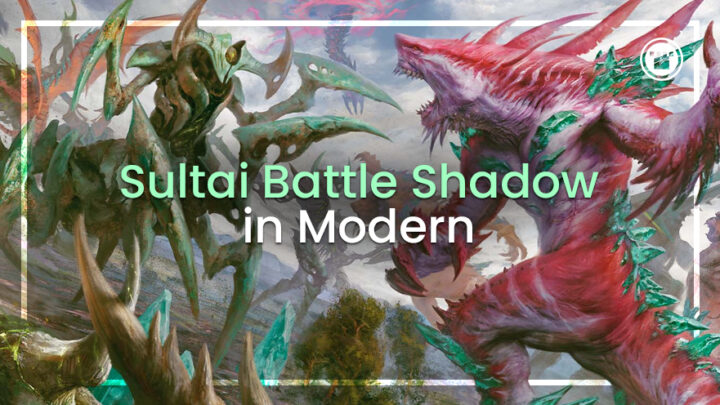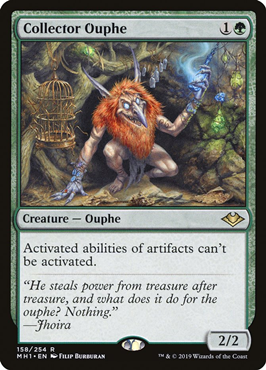Death’s Shadow decks haven’t had a meaningful addition in some time, which contributes to a decline in both play rate and success, as of late. However, I’m not here today to bemoan the performance of Shadow — I actually have good news! Not only did Death’s Shadow win an MTGO challenge last week, piloted by xfile, but it is a departure from the traditional Grixis builds, opting instead for Sultai.
Sultai Battle Shadow, which I have affectionately started calling Sultai BS (because that is what it looks like upon first glance), has felt real thus far. It takes quite a lot for Death’s Shadow to drop Ragavan, Dragon’s Rage Channeler and Unholy Heat, but here we are.
Invasion of Ikoria is the card that pushed it over the edge. Let’s take a closer look at how this new battle is changing how we’re building Death’s Shadow.
General game plan
The primary game plan for Battle Shadow isn’t much of a departure from Shadow decks of the past. The goal is still to disrupt your opponent with Thoughtseize, Fatal Push and Stubborn Denial while applying pressure with oversized and under-costed beaters.
Your graveyard matters in this version of Death’s Shadow as Tarmogoyf tracks card types and Traverse the Ulvenwald needs Delirium to turn into an efficient tutor. It is hard to classify the exact role Sultai BS is supposed to play in a generic swath of matchups.
My heuristic with a deck like this is you’re likely the more controlling deck against dedicated Aggro lists and the Aggro deck against basically everything else. Combo or Prison decks require a more nuanced approach than that because you need a mix of pressure and disruption instead of leaning heavily to one side.
Card Selection

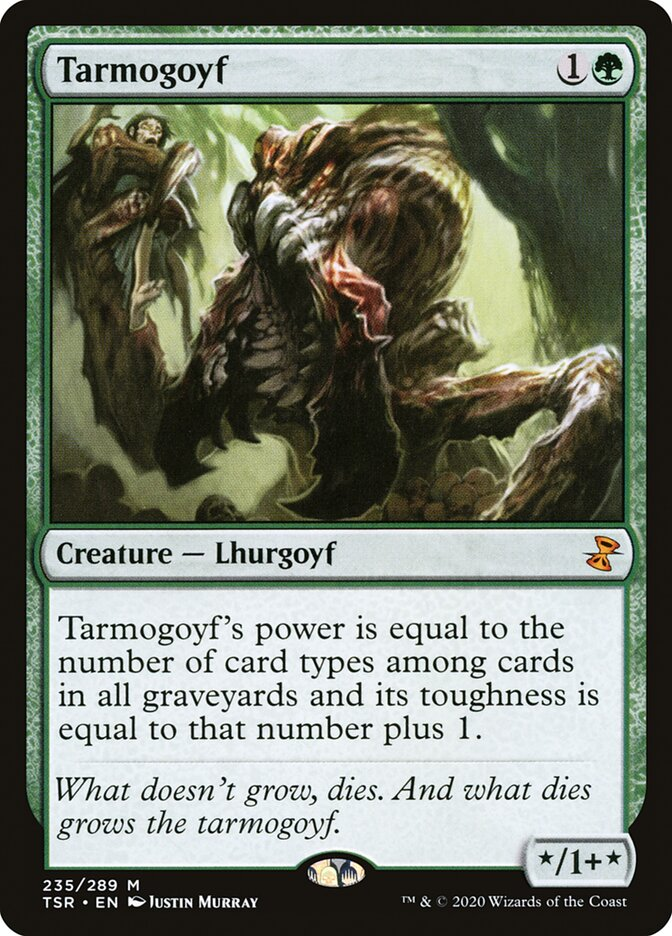
The goons, the beefers, the dynamic duo — Death’s Shadow and Tarmogoyf form a powerful core of “creatures with way higher stats than they should for the amount of mana paid.” I know, that last part doesn’t roll off the tongue well. I assure you when I’m not crashing the red zone with these two knuckleheads, I’m brainstorming better nicknames.
Death’s Shadow has been more of a roleplayer than a centerpiece in “Death’s Shadow” decks over the last year or so. Grixis doesn’t have the room to play Street Wraith, which limits the speed at which you can get a Shadow into play.
Sultai BS can’t play Jegantha, the Wellspring because of Invasion of Ikoria, which means Street Wraith is back on the menu and Death’s Shadow has been promoted to a top two option again. As always, there is an interesting balance that takes place between your life total and the opponent’s when Death’s Shadow is involved, but it has some excellent backup.
Tarmogoyf has been a cornerstone of Modern Midrange decks for over a decade. If it ain’t broke, don’t fix it, and Tarmogoyf still does exactly what decks like Sultai BS need it to.
Blocking in the early part of the game until you’re ready to turn the corner is a hallmark trait of our favorite Lhurgoyf. Sultai BS actually makes Tarmogoyf better than it has been in the past by adding the Battle card type to make Tarmogoyf even larger.
While the highs or Death’s Shadow are high, the lows can also be tough. But worry not — Tarmogoyf is rock solid and will always there when you need a body.
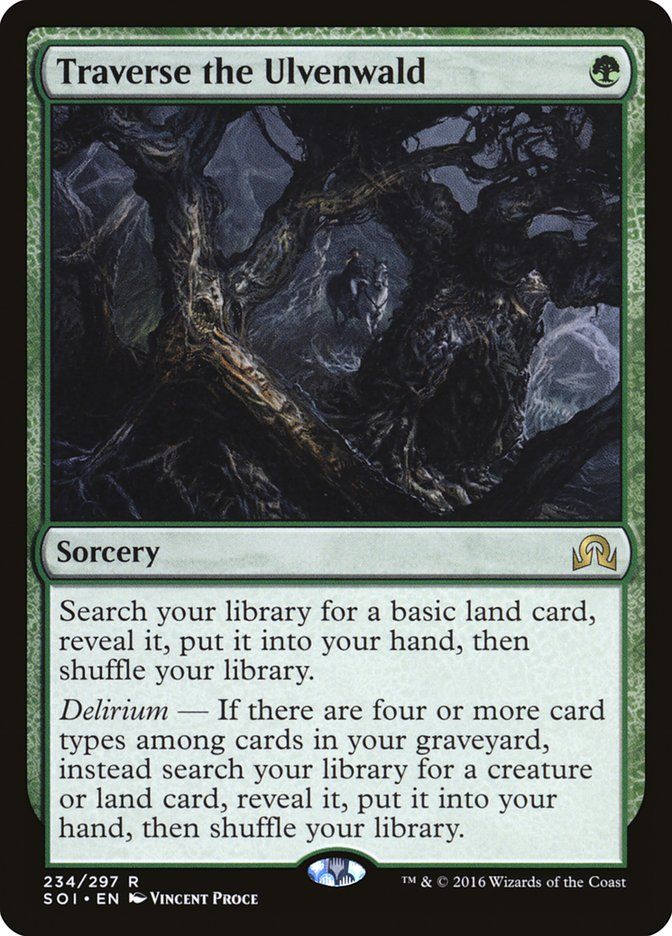

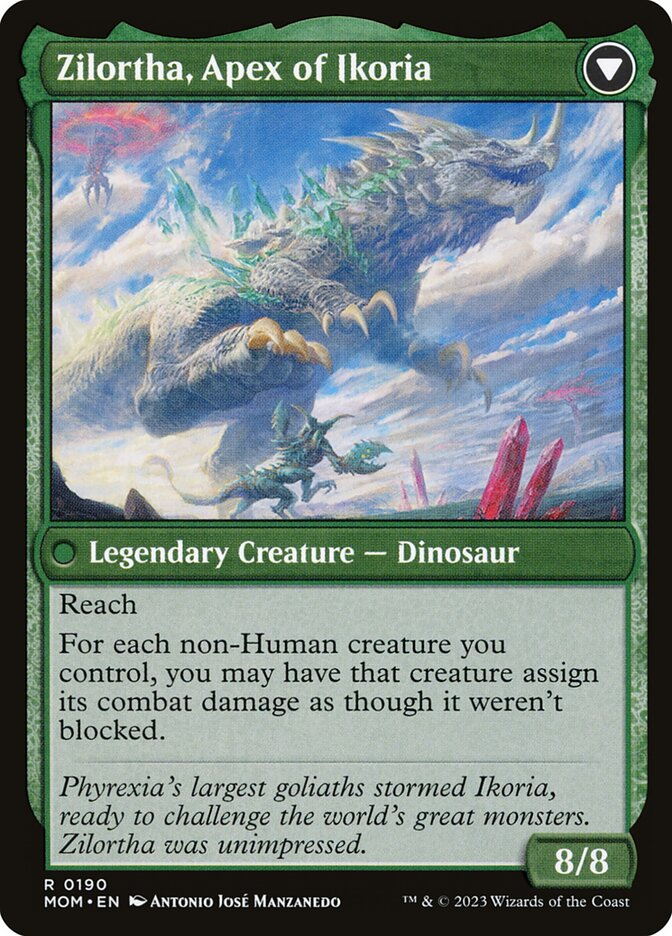
Traverse the Ulvenwald and Invasion of Ikoria are both powerful tutor effects in their own ways. Because Sultai BS only runs Tarmogoyf and Death’s Shadow as its primary threats, you need to make sure you can find them consistently in a deck that doesn’t have time to spend looking for them.
Eight tutors effectively gives you a much more robust 16 threats. Traverse the Ulvenwald coming in at a single green mana is as efficient as it comes. However, you need to do a little work to get it there, as Delirium is required to get the most out of Traverse.
In Modern, especially with Sultai BS, achieving Delirium isn’t difficult at all. You don’t need to put cards like Thought Scour or Grisly Salvage in the deck to make it work. Thanks to Mishra’s Bauble, Dress Down and Invasion of Ikoria, getting four card types in the yard quickly while playing a normal game of Magic is trivial.
Invasion of Ikoria is the new bright spot in Sultai BS. As previously mentioned, getting a second tutor brings the deck from an effective 12 threats to 16, which is an important jump to make sure you find a way to end the game every game.
While other tutors existed previously, Invasion of Ikoria blows them out of the water. First things first, it can search your graveyard for a creature as well, meaning you don’t need to remove a creature from your deck, artificially increasing your remaining threat density against removal heavy decks. There’s also a back side to this Battle…oh and it’s an 8/8 with reach…and it also makes blocking a nightmare for your opponent.
You may think, “six is a lot of damage to sink into this battle,” and you’d be right. But that’s why you can tutor for Vampire Hexmage and sacrifice it to remove all of the defense counters from the battle, causing it to flip!
One issue Death’s Shadow decks faced against decks like Creativity is they could simply block for a long time before finding a way to kill you. Zilortha, Apex of Ikoria says they’re allowed to block, but they won’t like the result. Turns out all we needed was a tutor stapled to a 2023 version of Thorn Elemental.



Thoughtseize, Inquisition of Kozilek, Stubborn Denial, Fatal Push, Grist, the Hunger Tide and Vampire Hexmage make up the interaction suite that makes Sultai BS so potent. Thoughtseize is a long time Death’s Shadow staple, both clearing the way and acting as an enabler for one mana.
Furthermore, while other decks see losing two life as a downside, Death’s Shadow welcomes it (it makes Shadow even scarier). Inquisition of Kozilek is here both as a fifth discard spell to make sure we have enough early action and as an additional sorcery for Delirium purposes.
Stubborn Denial has struggled in previous versions of Death’s Shadow because many recent versions don’t run enough creatures to turn on Ferocious. But with Death’s Shadow, Tarmogoyf and Zilortha, Sultai BS has a full 12 ways to turn it on.
Negate for one mana is well above rate, and I am a firm believer that midrangey decks in Modern need to be able to interact on the stack, as the non-creature spells are some of the most powerful ones in Modern. Stubborn Denial almost always is even or positive on the mana exchange, often creating a lot of tempo via the mana advantage it creates.
Ok, so we know how Sultai BS answers spells. But how does it answer creatures?

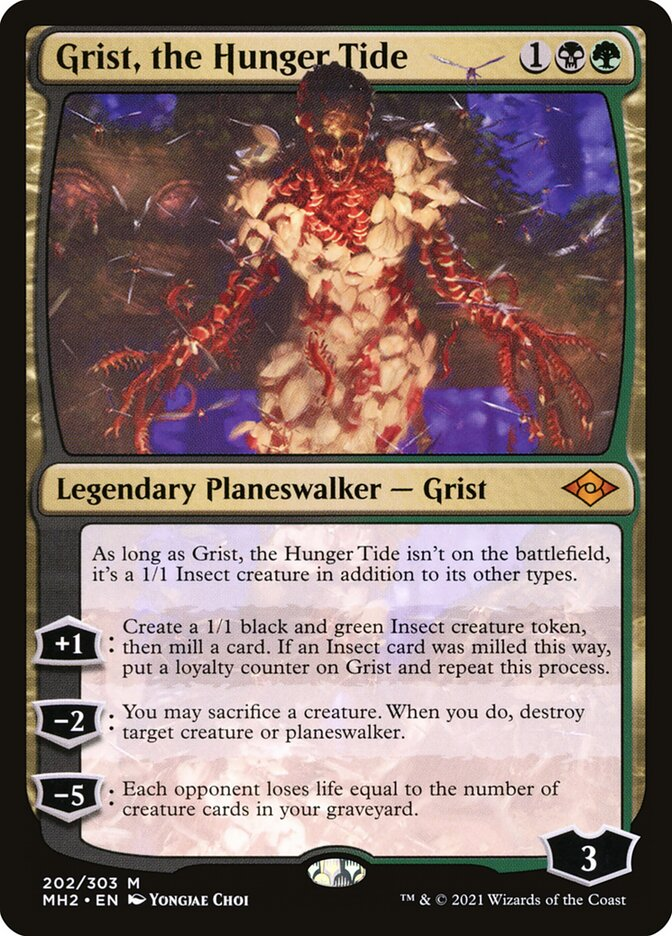

Fatal Push is simple but effective. It’s our rock, our ride or die…which is because we will probably die without it. One of the most efficient removal spells in Modern, Fatal Push cleans up the vast majority of threats while coming in with a price tag of just one mana.
Being able to seamlessly weave Fatal Push into multi spell turns greatly increases your ability to spend more mana than your opponent. Four copies has been a Death’s Shadow mainstay for a while, and without Unholy Heat in the deck, Fatal Push needs to do even more lifting than normal.
Grist, the Hunger Tide is a new inclusion in Death’s Shadow decks. Usually, a three mana Golgari planeswalker doesn’t fit the bill, either by color or by the mana cost getting pushed out by cheaper, more powerful cards. However, the rarity that is Sultai Death’s Shadow means one of Grist’s two biggest restrictions is off the table.
While three mana isn’t something you want to see often in a 19 land deck, Grist does have the creature supertype, which means Traverse the Ulvenwald and Invasion of Iklora can find it.
Bulking up the removal suite with Grist helps ensure you have access to a removal spell frequently, albeit slow or costly. Grist does also provide a constant stream of blockers if you find yourself racing, which will likely happen.
Abrupt Decay is a nice, catchall removal spell, and seeing one copy in Sultai makes sense. Without access to red, it is hard to find easy access to artifacts while also still being a passable card in Modern. The nice part about Abrupt Decay is the flexibility to often act as Terminate while giving you a card that still has text against non-creature decks.
Dress Down certainly didn’t dress to impress given how long it took for Modern players, myself included, to figure out just how powerful the card is. Whether it is blanking a Solitude, cleaning up Construct tokens, shutting down a Primeval Titan or just pumping your Death’s Shadows, Dress Down does it all and more, all while drawing a card.
An underrated part about Dress Down is that it is an enchantment that easily goes to the graveyard, making Delirium much easier to enable and pumping Tarmogoyf.
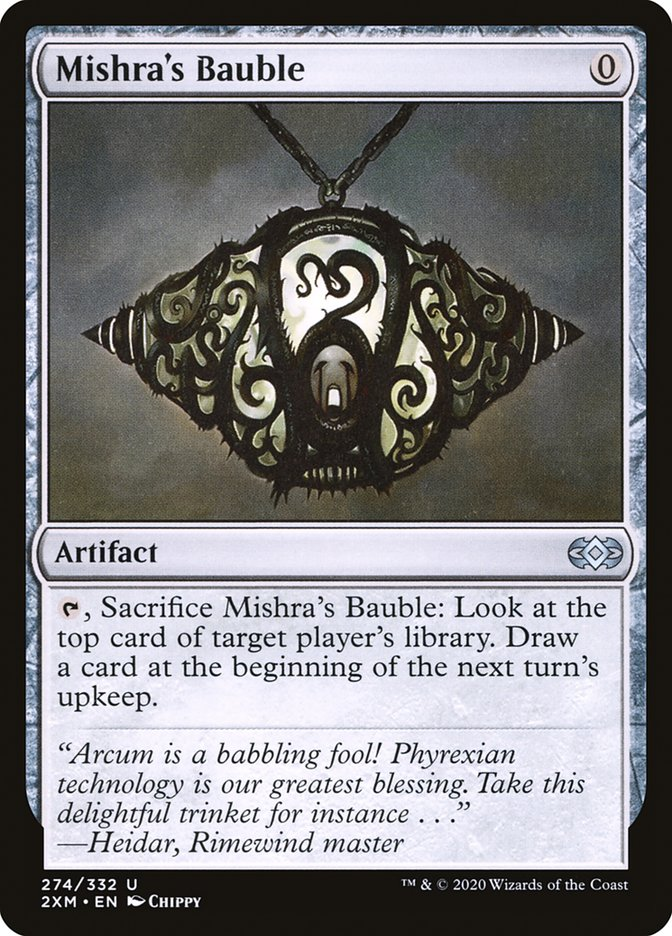
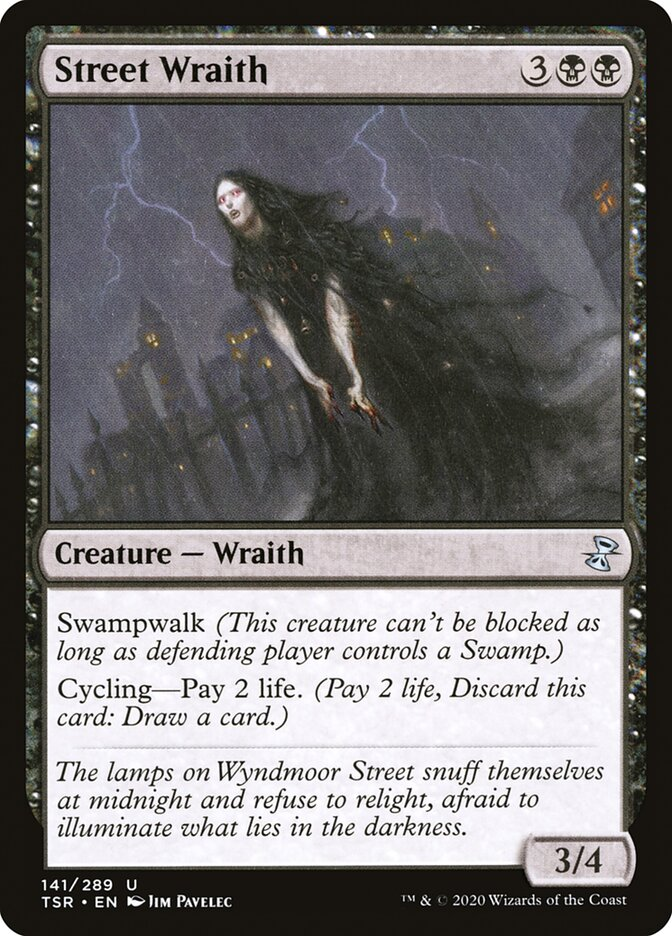
Mishra’s Bauble and Street Wraith are the glue that holds the whole operation together. Because the Death’s Shadow package is so lean on mana cost, it gets to cheat on lands. But 19 lands is much more palatable when you’re effectively playing a 52 card deck thanks to the zero mana draws from Mishra’s Bauble and Street Wraith.
On top of making it easier to find lands, adding artifact and creature to the graveyard for free early in the game is huge for making sure Traverse the Ulvenwald is online in a reasonable time frame as well as giving Tarmogoyf some much needed size.
My Changes
After playing with xfile’s version of Sultai BS, I found there were a couple of things I wanted to tweak — but nothing major.
First, I swapped a Dress Down and a Stubborn Denial. A large number of the most powerful spells in Modern are non-creature spells. Indomitable Creativity, Crashing Footfalls, Living End are a few that come to mind. Cascade decks like Rhinos and Living End are good at playing through discard spells because they have eight copies of their important card, which means finding a replacement isn’t difficult.
Furthermore, if you were to take a cascader, they can use their mana in other ways on turn three. However, if you let them cast the cascader and Stubborn Denial the payoff, you occupied an entire one of their turns for one mana.
While Dress Down also answers some of the most powerful cards in Modern as well, it is easier for decks like Sultai BS to answer creatures than it is spells, and a lot of the creatures you care about using Dress Down on don’t end the game immediately, like Indomitable Creativity or Living End will.
Other than the small number shift in the main deck, the rest of my changes were to the sideboard. The biggest change is I cut the two copies of Collective Brutality. I find that unless you’re playing against Burn, having two options that are not good on rate isn’t strong enough. I’d rather have another Stubborn Denial, which is still a good card against Burn but has more applications in other matchups.
In place of the other Collective Brutality, I added a Collector Ouphe. This list is low on ways to answer artifacts, and Hardened Scales has been popping up quite a bit over the last couple of weeks.
I’m unsure if Collector Ouphe or Haywire Mite is a better option here, and it will likely depend if Scales has staying power, because Mite is better against Hammer. But at the end of the day, having a tutorable way to disrupt artifacts is a nice add.
Endurance has been a Modern allstar in nearly every green deck since Modern Horizons 2 launched. I was surprised to not see the first copy in a deck with eight tutors. I cut the third Nihil Spellbomb to add the first Endurance, which gives Sultai BS more access to a piece of graveyard interaction, which is important to find early against many decks where you want it.
End Step
This is only the beginning of the journey for Sultai BS, and I’m already excited to keep working on it. A couple of things I’m considering going forward are: cutting a Traverse, maybe two, because they’ve been clogging my hands too often.
I’d replace them with another piece of interaction, likely Victim of Night or Doom Blade as killing Murktide and Primeval Titan is relevant. Figuring out all of the numbers is a work in progress, but xfile did a good job at giving us a solid jumping off point!
As always you can find me on Twitter @RappaciousOne for questions, comments, or feedback. As always, thanks for reading and I’ll see everyone next time.

Michael Rapp is a Modern specialist who favors Thoughtseize decks. Magic sates his desire for competition and constant improvement.

